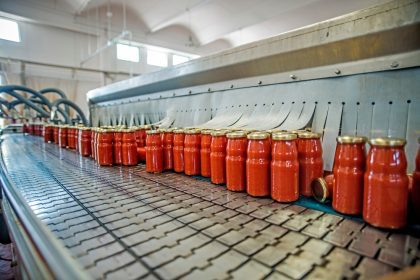The sequence in which you eat your food isn’t just about etiquette or tradition, it’s actually programming your digestive system, blood sugar response, and nutrient absorption in ways that can dramatically affect your health, energy levels, and weight management. That innocent decision to save your salad for last or start with bread could be setting off a cascade of metabolic reactions that leave you feeling bloated, tired, and craving more food within hours.
Your digestive system isn’t a simple conveyor belt that processes whatever you throw at it in any order. It’s a sophisticated chemical processing plant that responds differently to various food combinations and sequences, releasing different enzymes, hormones, and digestive juices based on what arrives first and how different foods interact as they move through your system.
What makes food sequencing so powerful is how it can completely change your body’s response to identical meals. The same exact foods eaten in different orders can produce vastly different effects on your blood sugar, satiety hormones, digestive comfort, and even your likelihood of storing fat versus burning it for energy.
Why your stomach isn’t a mixing bowl
Your stomach produces different types and concentrations of digestive enzymes based on the initial signals it receives from the first foods that arrive. When you start with simple carbohydrates, your digestive system primes itself for sugar processing, but if protein or fat arrives later, it has to scramble to produce the right enzymes, often leading to incomplete digestion.
The pH of your stomach changes dramatically based on what you eat first, and this initial pH environment affects how well subsequent foods are broken down and absorbed. Starting with acidic foods creates a different digestive environment than beginning with alkaline foods, influencing the entire digestive process.
Different foods require different transit times through your digestive system, and when fast-digesting foods get trapped behind slow-digesting ones, it can lead to fermentation, gas production, and digestive discomfort. This food traffic jam in your intestines can cause bloating and rob you of energy as your body struggles to process the backed-up mess.
The mechanical mixing that occurs in your stomach works best when compatible foods arrive together, but when conflicting food types are layered in the wrong sequence, proper mixing becomes difficult and digestion becomes inefficient and uncomfortable.
The blood sugar rollercoaster that starts with your first bite
Eating carbohydrates first, especially refined ones, triggers a rapid spike in blood glucose that sets off a cascade of hormonal responses throughout your meal. Your pancreas releases insulin to handle the sugar rush, but this insulin response affects how your body processes everything else you eat afterward.
When you start a meal with bread, pasta, or other high-glycemic foods, you create an environment where your body is primed to store fat rather than burn it. The insulin response from that initial carbohydrate load influences fat storage for hours after your meal, regardless of what else you consume.
The blood sugar spike from eating carbohydrates first also triggers cravings for more carbohydrates throughout and after your meal. This creates a cycle where you feel unsatisfied despite eating adequate calories, leading to overeating and poor food choices later in the day.
Starting with protein or healthy fats instead creates a more stable blood sugar response that helps regulate appetite hormones and reduces cravings. This metabolic stability makes it easier to feel satisfied with smaller portions and avoid the energy crashes that come with blood sugar fluctuations.
How eating salad last ruins its benefits
When you eat fiber-rich foods like salads after consuming starches and proteins, the fiber can’t perform its job of slowing down sugar absorption because the fast-digesting carbohydrates have already been absorbed. This timing issue eliminates one of the primary benefits of eating vegetables with your meals.
Fiber works best when it’s already in your digestive system before other foods arrive, creating a protective barrier that slows nutrient absorption and promotes more stable blood sugar levels. Eating fiber-rich foods last means they miss the opportunity to regulate the absorption of everything else you’ve consumed.
The enzymes needed to properly break down raw vegetables and access their nutrients work most effectively in the specific pH environment that exists at the beginning of digestion. By the time you eat your salad last, your stomach’s pH has changed in ways that reduce the bioavailability of many vegetable nutrients.
Eating vegetables first also triggers the release of digestive enzymes and bile that help process the fats and proteins that follow. This digestive priming effect is lost when vegetables come at the end of the meal, leading to less efficient overall digestion.
The protein timing trap that wastes muscle-building nutrients
Eating protein after filling up on carbohydrates means your digestive system is already working overtime to process sugars, leaving fewer resources available for the complex job of breaking down and absorbing amino acids. This digestive overload can significantly reduce the bioavailability of protein from your meal.
The insulin response triggered by eating carbohydrates first can actually interfere with the absorption and utilization of certain amino acids, reducing the muscle-building and satiety benefits you should get from protein-rich foods. This metabolic interference can leave you feeling less satisfied despite consuming adequate protein.
Protein digestion requires specific enzymes and stomach acid conditions that work best when protein arrives early in the meal. When protein comes after other foods have already altered your digestive environment, these optimal conditions may no longer exist, leading to incomplete protein digestion.
The satiety signals triggered by protein work most effectively when protein is consumed early in the meal, helping to regulate appetite and prevent overeating. When protein comes last, these important appetite-control mechanisms don’t have enough time to influence your meal portion sizes.
Why dessert first might actually make sense
Starting a meal with a small amount of something sweet can actually help regulate your overall sugar intake by triggering early satiety signals that prevent overconsumption later in the meal. This counterintuitive approach works because it satisfies cravings before they become overwhelming.
The psychological satisfaction of having dessert first can reduce the compulsive overeating that often occurs when people save sweet foods for last. When you know you’ve already had your treat, you’re more likely to make rational decisions about the rest of your meal rather than eating mechanically toward a reward.
Eating sweet foods on an empty stomach actually produces a more dramatic blood sugar spike that triggers stronger satiety hormones, potentially leading to consuming fewer total calories during the meal. This effect is lost when dessert comes after other foods have already begun the digestive process.
The rapid satisfaction from having something sweet first can also reduce the psychological drive to overeat savory foods, leading to better portion control throughout the rest of the meal. This approach works particularly well for people who struggle with feeling satisfied after meals.
The traditional food orders that actually make sense
Many traditional dining customs developed around optimizing digestion and nutrient absorption, even though the people creating these traditions didn’t understand the science behind why they worked. These culturally evolved eating patterns often represent thousands of years of trial and error in optimizing meal sequencing.
Mediterranean and Middle Eastern traditions of starting meals with small amounts of fat like olive oil or nuts help slow the absorption of subsequent carbohydrates while triggering the release of digestive enzymes needed for overall meal processing. This traditional approach creates more stable blood sugar and better nutrient absorption.
Asian traditions of serving soup first provide hydration and begin the digestive process with easily absorbed nutrients, while also creating a sense of fullness that helps regulate portion sizes for more calorie-dense foods that follow.
The French tradition of multiple small courses served in specific sequences optimizes digestion by allowing each type of food to be processed properly before the next course arrives. This approach prevents the digestive conflicts that occur when incompatible foods are consumed simultaneously.
The modern meal mistakes that wreck your metabolism
Starting meals with bread or other refined carbohydrates, a common practice in many restaurants, sets up your metabolism for fat storage and energy crashes while reducing your ability to feel satisfied with reasonable portions. This seemingly innocent appetizer choice can sabotage your entire meal’s metabolic effects.
Drinking large amounts of liquid during meals dilutes digestive enzymes and stomach acid, interfering with proper food breakdown regardless of what order you eat things in. This common habit can negate many of the benefits of optimal food sequencing.
Eating too quickly prevents your body from responding appropriately to different foods as they arrive, essentially forcing everything through your digestive system before proper enzymatic responses can occur. The benefits of food sequencing require eating slowly enough for your body to respond to each component.
Combining too many different types of foods in a single meal can overwhelm your digestive system regardless of the order, creating confusion in enzyme production and leading to incomplete digestion and nutrient malabsorption.
The optimal eating sequence for different goals
For weight management, starting with fiber-rich vegetables, followed by protein, then healthy fats, and ending with any starches creates the most stable blood sugar response and strongest satiety signals. This sequence maximizes your body’s ability to feel satisfied with fewer calories.
For athletic performance and muscle building, beginning with easily digestible carbohydrates for quick energy, followed by protein for muscle synthesis, and ending with vegetables for micronutrients can optimize nutrient timing for training and recovery needs.
For digestive health, starting with foods that stimulate enzyme production like bitter greens or fermented foods, followed by proteins and fats, and ending with cooked vegetables can optimize digestive function and reduce discomfort after meals.
For blood sugar management, always starting with protein or healthy fats before consuming any carbohydrates helps blunt the glycemic response and create more stable energy levels throughout the day.
How to retrain your eating sequence habits
Start by making small changes to your current eating patterns rather than trying to completely overhaul your meal sequence all at once. Simply adding a few bites of vegetables or protein before consuming starches can begin to improve your metabolic response to meals.
Pay attention to how different eating sequences affect your energy, mood, and hunger levels after meals. This awareness helps you identify which approaches work best for your individual physiology and lifestyle needs.
Practice eating more slowly to give your body time to respond appropriately to different foods as they arrive. This slower pace is essential for gaining the benefits of optimal food sequencing and helps you become more aware of satiety signals.
Plan your meals in advance to include the right foods in the right proportions for optimal sequencing. Having the right foods available makes it easier to eat them in the most beneficial order rather than just consuming whatever’s most convenient.
Your plate is a metabolic programming device
Every meal is an opportunity to either optimize or sabotage your metabolism through the simple choice of what you eat first, second, and third. The sequence of foods on your plate creates a cascade of hormonal and digestive responses that affect your energy, mood, and health for hours after you finish eating.
Understanding food sequencing gives you a powerful tool for improving your health without changing what you eat, just when you eat it. This simple adjustment can help you get more nutrition from the same foods while feeling more satisfied and energetic.
The next time you sit down to eat, remember that your first bite is setting the metabolic tone for your entire meal. Choose that first bite wisely, and let it work in your favor rather than against your health goals.


















